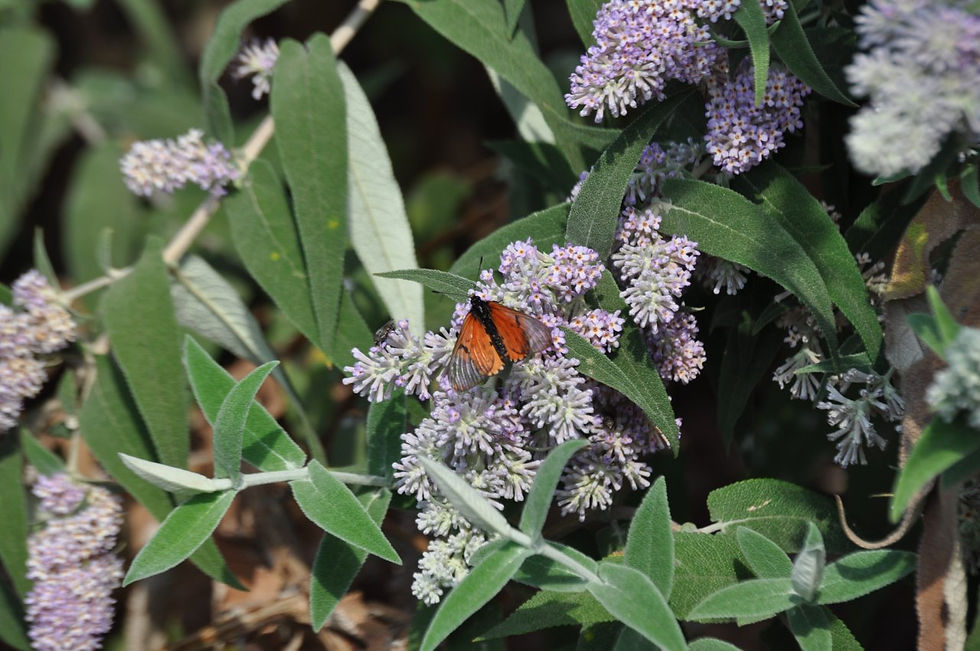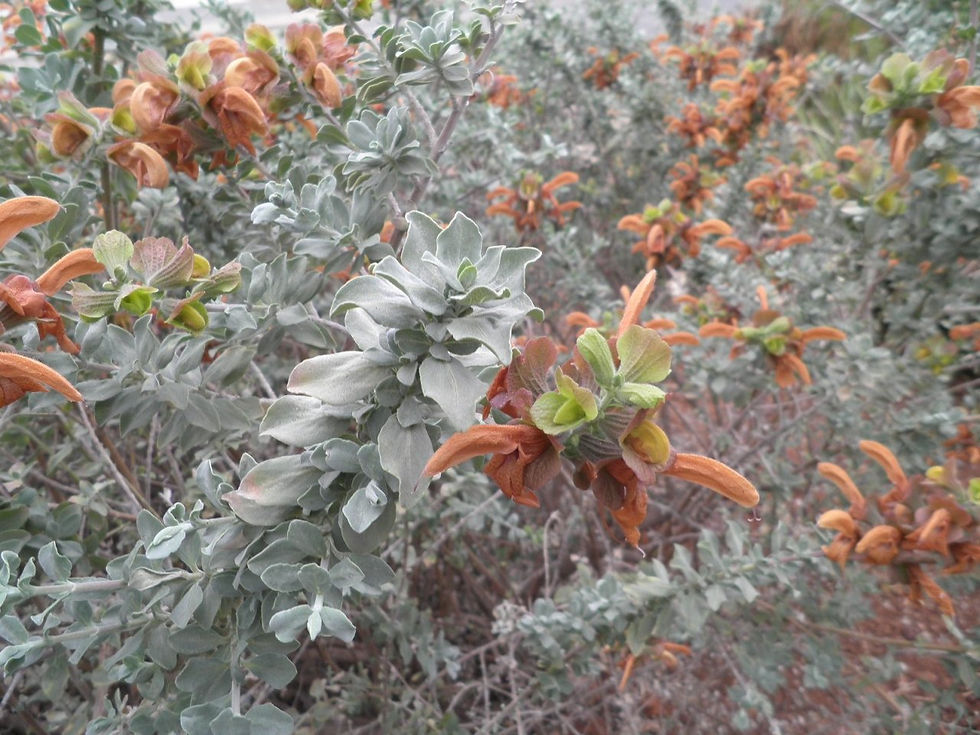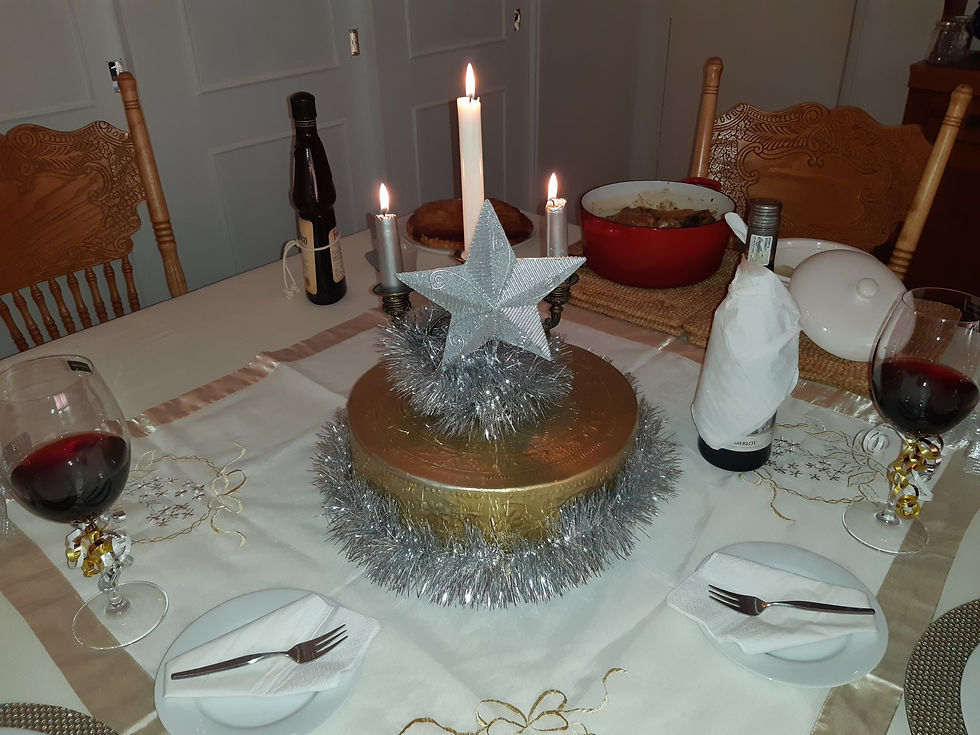South Africa: Spring Equinox & Heritage Day, 21st & 24th September
- Gerda Herenius

- Jan 28
- 5 min read
Updated: Feb 14

In the Southern Hemisphere, we are fully into spring by spring equinox on the 21st of September.
With a departing snarl, winter casts a last bitterly cold spell. Everywhere nature is stubbornly pushing winter away as she triumphantly swells with beauty and freshness. Our indigenous Sagewood, Buddleja salviifolia, is heavy with its late winter-flowering bunches of tiny lilac flowers, their yellow throats inviting a multitude of butterflies and bees to feed, hence its common name, the Butterfly Bush. The exuding honey scent of these diminutive flowers intensifies after sunset, luxuriously draping itself on the evening air.

The Salvia Africana Lutea or Brown Salvia, another indigenous shrub, is also a late winter bloomer. Its tan-coloured, lipped flowers, shaped like tubular mouths, release exotic spicy perfumes. Wild irises with their brilliant white petals and purple and yellow throats, are dotted throughout the garden. The Citrus Limon Eureka lemon tree is heavily in blossom. Nectar-eating and pollen-collecting insects are industriously buzzing around the spring garden.


Tiny leaves are making their appearance on the spindly branches of the ornamental pomegranate tree. Small orange baubles eagerly appear among the fast-growing leaves, keen to spurt into dense bright orange flowers.
Garden lizards and geckos are running around with their swollen bellies, looking for a safe place to deposit their eggs in anticipation of the tiny 1 cm long offspring that will emerge in early summer, needing to negotiate feeding birds, and heavy summer rains in their early fragile lives. The doves are cooing their courting songs and the weavers are busy building nests, loudly inviting potential mates to come and do a site test. The monogamous mossies are getting their nests from last season ready for the next round of children.
And our cats are outside soaking in the sunshine and luxuriously rolling in the warm dusty red soil...
This time of year is so deliciously vibrant with new life and the promise of rebirth and renewal. No wonder the ancients made so much of spring, especially in the Northern Hemisphere where land and life would have been trapped in a frozen landscape, white in its stark, unforgiving sterility. It is a seasonal change that truly deserves its own celebration. The transition into spring officially takes place on 21 September when the length of the winter nights has shortened to equal the length of the day, and from here onward the days grow longer and hotter and the nights grow shorter and balmier. The sun rises earlier and sets later and here on the South African plateau in sub-Saharan Africa, the sun’s morning and evening glow intensifies into a globe of brilliant orange incandescence.
On the 24th of September, South Africans celebrate Heritage Day. It is particularly fitting that this day should find itself so close to spring equinox. We are a young nation, still struggling with birth pains as we emerge from the scars left behind by the oppressive cruel darkness of the apartheid years. We are a multitude of ethnicities, cultures and languages in South Africa, each with its own heritage, struggling to merge into a unified nation.
Most South Africans, though, celebrate—aside from many who proudly dress up in traditional gear, sing ancestral songs and cook traditional meals—that which makes us all so distinctly South African: the flag, the national anthem, our exquisite African fauna and flora and above all our love of braaiing. ‘To braai’ is a uniquely South African verb describing cooking outside on a fire.
Now, we are not talking about a barbecue. We are talking about a real fire with wood in a braai (the noun describing the metal or brick vessel in which the fire is made). Our public picnic sites are full of eating areas, each with its own central braai pit. To braai is so South African and there is nothing that the adventurous among us cannot cook on the fire. There are recipe books dedicated to the art of braaing. There are chefs specialising in braaiing. There are braai competitions judged by top chefs. Indeed, so much so is braaiing a part of every single South African’s life that many of us refer to our Heritage Day as ‘Braai Day’.
We South Africans love eating and have quite a rich cultural heritage in food: an exciting blend of cuisines from various indigenous peoples and those contributing later: Javanese, Dutch, French, Portuguese and English.
South Africans will make the effort to slow cook a dish for hours in a potjie (a three-legged cast iron pot) on the coals. I am rather partial to a good steak on the fire, either in the form of sosaties (kebabs), a heritage from Cape Malay cuisine, or as a steak with good old-fashioned potato salad. Jacket potatoes wrapped in foil and cooked in the coals until tender, and then smothered with melted butter or thick sour cream with a generous helping of freshly ground black pepper, is also a firm favourite. And don’t forget the ever-popular garlic bread!
Sosaties are marinated in wine, tomato, curry or chutney marinades and then strung on sosatie skewers interspersed with crispy, coloured peppers, and baby or onion chunks. Alternatively, there is a whole steak marinated to perfection and cooked on coals that are glowing at just the right temperature. A favourite of mine is to skip the marinade and simply dip the steak in a mixture of equal amounts of salt and crushed black peppercorns so that it has a thick coating. Pop this onto the coals, braai to your liking while the pepper mixture forms a crust.
Another favourite culinary delight of mine is to mix strong mustard or mustard powder with a little white wine, lemon juice or apple cider vinegar, a dash of oil, salt and pepper and some mixed herbs and coat the top side of your steak with the mustard mixture. Braai for half of your cooking time, turn, coat the other side, cook for the second half of your cooking time and then sprinkle with a strong mature cheese.
Chicken wings marinated in a spicy chilli sauce made with a little oil, orange juice, ginger, garlic, honey, tomato, soy sauce and chilli and then blackened on the coals is also a great idea if you are looking for an alternative to red meat.
A very popular meal to braai in the coastal areas, is snoek, Thyrsites atun, a long slim species of mackerel fished in the cold Atlantic waters of the Southern Hemisphere. In Australasia, it is referred to as barracouta. Snoek is traditionally braaied with a buttery apricot basting sauce and sweet potatoes in the fire. A nice glass of red wine with your food goes down a treat.
Nothing says summer is on its way like vanilla ice cream with a rich chocolate sauce, laced with brandy or rum and generously sprinkled with toasted nuts and chocolate chips.

And then comes the mesmerising show of the newly stoked fire after the meal. You’ve eaten well. You’re sipping another glass of wine or a liqueur, and you are staring into the flames dancing and leaping as it warms the still nippy evening air. You lose yourself in its hypnotic dance of mythical prophecies, secrets and mysteries. A bat family of four darts overhead in the early night sky, diving after insects. An owl hoots. Africa whispers. Reminders that we are blessed in our connection to this ancient earth and that life is good despite its challenges and hardships.
Published on Medium.com 14 February 2025, https://medium.com/@gerda_16983/south-africa-spring-equinox-heritage-day-21st-24th-september-57b3b7fd5fa5



Comments